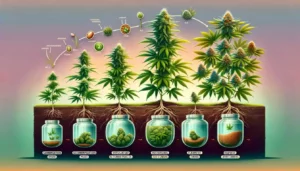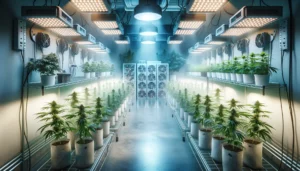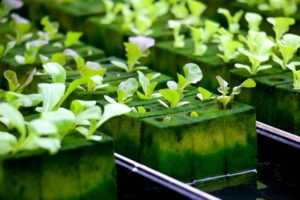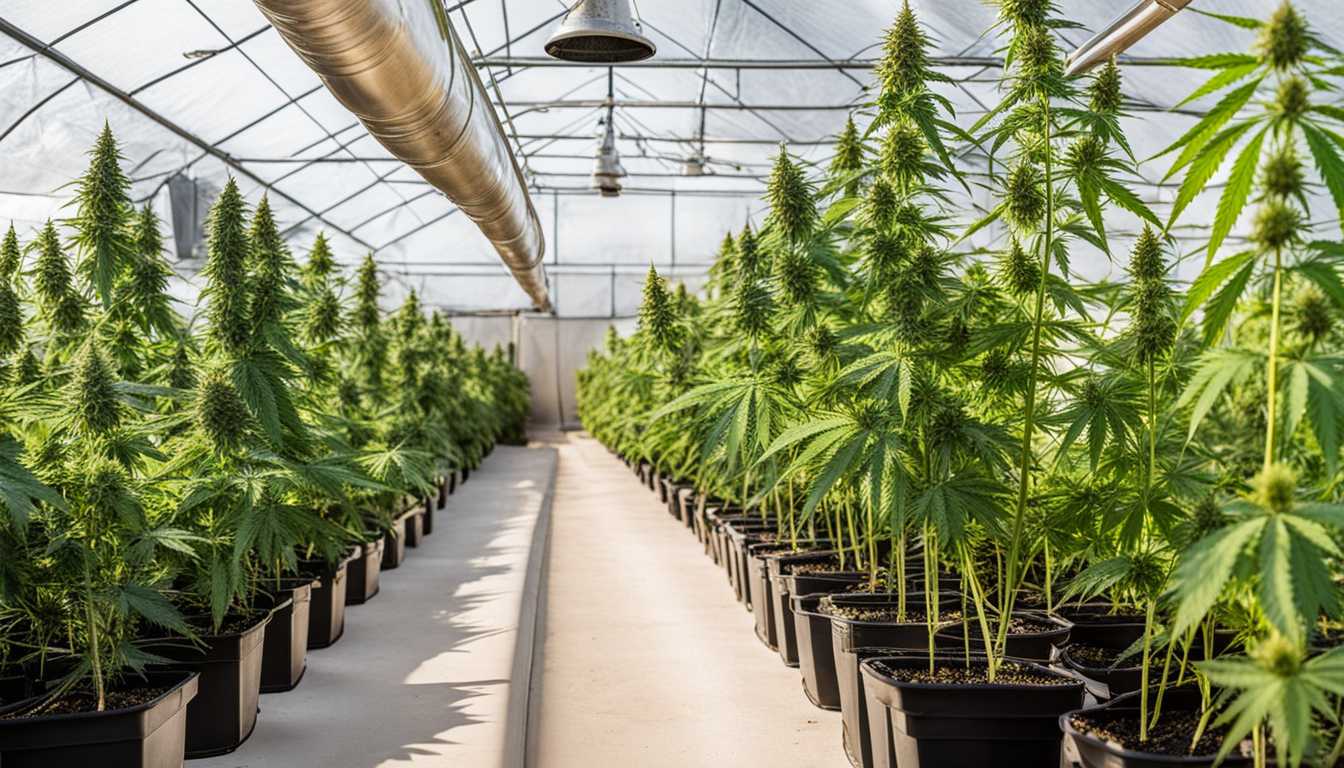The Ultimate Checklist for Starting Your Indoor Cannabis Garden provides a comprehensive checklist for anyone interested in starting an indoor cannabis garden. Covering the fundamentals of planning and preparing to set up your own indoor horticultural environment, gaining a basic understanding of the cannabis plant life cycle, and tips on maintaining a healthy garden, this guide will become an indispensable tool for beginners and experienced growers alike.
Planning Your Indoor Cannabis Garden: What Do You Need?
Before diving into the exciting world of indoor cannabis gardening, it is crucial to start with a well-thought-out plan. This will ensure a smooth and successful journey from the beginning. To get started, consider the following key aspects:
First, determine the purpose of your indoor cannabis garden. Are you growing for personal use or looking to establish a commercial operation? Identifying your goals will help you make informed decisions throughout the planning process.
Next, assess your available space. Consider factors such as the size of the room, ceiling height, and ventilation options. Adequate space is essential for the healthy growth of your cannabis plants. Additionally, ensure that the area can be effectively sealed off to control light and odor.
Another crucial consideration is lighting. Cannabis plants require a specific light spectrum for optimal growth, and choosing the right lighting system is vital. LED lights are a popular choice due to their energy efficiency and ability to mimic natural sunlight. Determine the appropriate wattage and number of lights based on the size of your garden.
Temperature and humidity control are also fundamental factors to consider. Cannabis plants thrive in specific temperature and humidity ranges, so investing in a reliable thermometer and hygrometer is essential. Additionally, explore options such as air conditioning, heaters, and humidifiers to maintain optimal conditions for your plants.
Finally, consider the strains of cannabis you wish to grow. Different strains have varying growth requirements, such as flowering times and nutrient needs. Research the characteristics of different strains to ensure you select ones that align with your goals and resources.
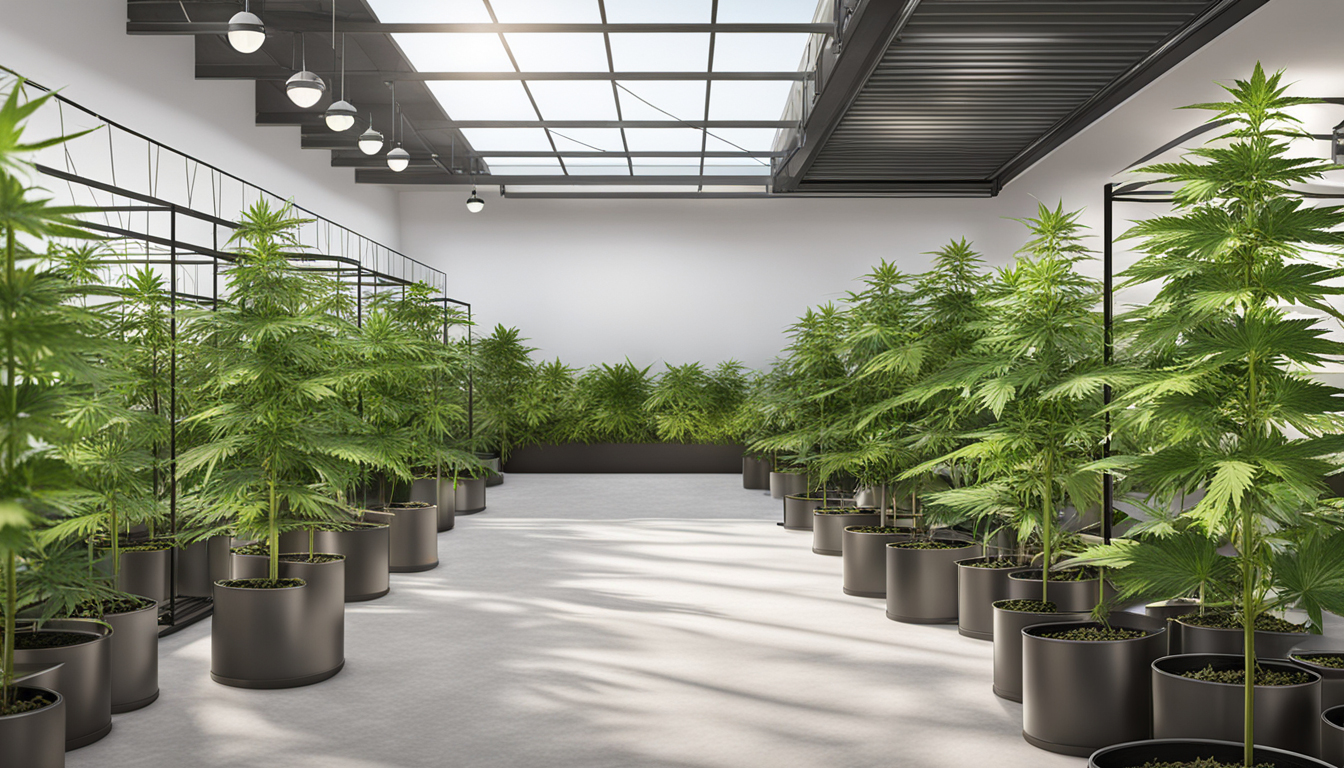
An illustration of a well-planned indoor cannabis garden layout.
Understanding The Cannabis Plant Life-Cycle: How Does It Grow?
To successfully cultivate cannabis indoors, it is crucial to have a solid understanding of the plant’s life cycle and growth process. Cannabis plants go through distinct stages from seed to harvest, each requiring specific care and attention.
The first stage is germination, where the seed begins to sprout and develop into a seedling. This process typically takes about 1-2 weeks and requires a warm, moist environment. It is important to provide adequate moisture and gentle lighting during this stage to encourage healthy root development.
Once the seedling emerges, it enters the vegetative stage, characterized by rapid leaf and stem growth. During this phase, the plant requires ample light, nutrients, and a stable environment. Providing a balanced nutrient solution and maintaining a consistent 18-24 hours of light daily will promote vigorous growth and healthy foliage.
After several weeks of vegetative growth, the cannabis plant transitions into the flowering stage. This is when the plant starts developing its buds containing the desired cannabinoids. To initiate flowering, adjust the light cycle to 12 hours of light followed by 12 hours of uninterrupted darkness. This change in lighting signals the plant to shift its energy towards bud development.
As the flowers continue to develop, it is crucial to monitor and adjust the environmental conditions. Maintain optimal temperature, humidity, and airflow to prevent mold, pests, and other issues that can affect the quality of the buds.
Towards the end of the flowering stage, the plant will begin to mature, and the trichomes on the buds will change color. This is an indicator that the plant is nearing harvest. Pay close attention to the trichomes’ color and consistency to determine the ideal time for harvest, as this will greatly impact the potency and flavor of the final product.
Selecting Your Cannabis Strains: What’s the Right Choice for You?
When it comes to selecting cannabis strains for your indoor cannabis garden, there are a few factors to consider. Each strain has its own unique characteristics, including growth patterns, cannabinoid profiles, flavors, and effects. Here are some key points to keep in mind when making your selection:
- Purpose:
Determine the purpose of your cannabis garden. Are you growing for recreational use, medicinal purposes, or both? Different strains have different effects, so it’s important to choose strains that align with your desired outcome. - Space and Resources:
Consider the space and resources available in your indoor garden. Some strains may require more space to grow properly, while others are more compact. Additionally, certain strains may have specific nutrient or lighting requirements. Assess your resources and choose strains that are suitable for your setup. - Indica, Sativa, or Hybrid:
Cannabis strains are typically categorized as indica, sativa, or hybrid. Indica strains are known for their relaxing and sedating effects, while sativa strains tend to be more energizing and uplifting. Hybrids are a combination of both. Consider the effects you desire and choose strains accordingly. - THC and CBD Levels:
THC and CBD are two prominent cannabinoids found in cannabis. THC is responsible for the psychoactive effects, while CBD is known for its therapeutic properties. Different strains have varying levels of THC and CBD, so consider your preferences and needs when selecting strains. - Flavor and Aroma:
Cannabis strains can have a wide range of flavors and aromas, from fruity and sweet to earthy and pungent. Think about the flavors and aromas that appeal to you and choose strains that align with your preferences.

A photo collage of various cannabis strains with their unique characteristics.
Setting Up Your Indoor Garden: ‘Is your space ready?
Before you start setting up your indoor cannabis garden, it’s crucial to ensure that your space is properly prepared. Here are some key considerations to keep in mind:
- Location:
Choose a suitable location for your indoor garden. It should have enough space to accommodate your plants, equipment, and ventilation systems. Ideally, the area should be well-ventilated and have access to natural light or the ability to set up artificial lighting. - Temperature and Humidity:
Cannabis plants thrive in specific temperature and humidity ranges. Aim for a temperature between 65-80°F (18-26°C) during the day and slightly cooler temperatures at night. Additionally, maintain a humidity level of around 40-60%. Investing in a thermometer and hygrometer will help you monitor and adjust these conditions accordingly. - Ventilation:
Proper air circulation is crucial for a healthy indoor cannabis garden. Set up an exhaust fan to remove stale air and control odors. Additionally, consider installing an intake fan or vents to bring in fresh air. This helps prevent the buildup of excess moisture and provides plants with the necessary CO2 for photosynthesis. - Light Source:
Indoor cannabis gardens rely on artificial lighting to provide the necessary light spectrum for plant growth. Choose a lighting system that suits your needs, such as high-intensity discharge (HID) lights, LED lights, or fluorescent lights. Ensure that the lighting setup covers the entire canopy area and can be adjusted as the plants grow. - Growing Medium:
Decide on the growing medium you will use for your indoor garden. Options include soil, soilless mixes, or hydroponics. Each has its advantages and considerations, so research and choose the best option for your situation.
Essential Tools and Equipment: ‘What’s in your toolbox?’
When it comes to starting your indoor cannabis garden, having the right tools and equipment is essential for success. Here are some key items you should consider including in your toolbox:
- Gardening Gloves:
Protect your hands from dirt, chemicals, and potential irritants while working with your plants. Choose gloves that are durable, comfortable, and provide a good grip. - Pruning Shears:
These sharp, handheld tools are essential for trimming and pruning your cannabis plants. They allow you to remove dead or excess foliage, promote airflow, and shape the plants for optimal growth. - pH Meter:
Maintaining the correct pH level of your soil or nutrient solution is crucial for nutrient absorption and plant health. A pH meter will help you accurately measure the acidity or alkalinity of your growing medium, enabling you to make the necessary adjustments. - Nutrients and Fertilizers:
Cannabis plants have specific nutrient requirements throughout their life cycle. Invest in quality nutrients and fertilizers designed for cannabis cultivation. Follow the recommended feeding schedule to ensure your plants receive the necessary macro and micronutrients for healthy growth. - Watering Can or Sprayer:
A watering can or sprayer with a fine mist setting is ideal for watering your plants without causing damage. This allows for even distribution of water and prevents soil erosion or compaction. - Timer:
A timer is essential for automating your lighting system. It ensures that your plants receive the correct amount of light and dark periods, mimicking natural sunlight cycles. This is crucial for proper plant development and flowering. - pH Up and pH Down Solutions:
These solutions are used to adjust the pH level of your water or nutrient solution. They are essential for maintaining the optimal pH range for nutrient uptake and preventing nutrient deficiencies or toxicities.
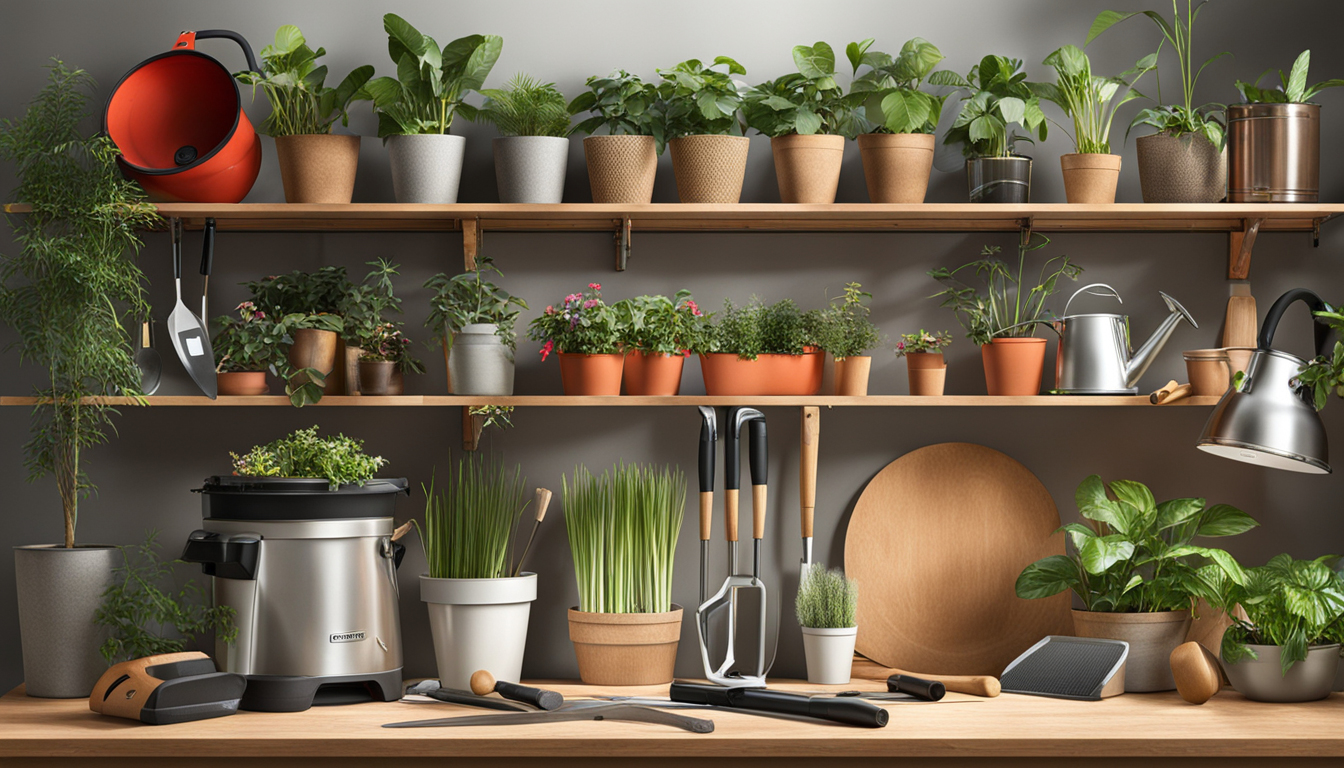
A photo of essential tools and equipment for indoor cannabis gardening.
Maintaining Your Indoor Cannabis Garden: How to Sustain Healthy Growth?
Once you have set up your indoor cannabis garden, it is crucial to maintain the right conditions to ensure healthy growth and maximize yields. Here are some key aspects to consider when maintaining your indoor cannabis garden:
- Temperature and Humidity Control:
Maintaining the proper temperature and humidity levels is vital for the health and growth of your cannabis plants. The ideal temperature range for most cannabis strains is between 70-85°F (21-29°C) during the day and slightly cooler at night. Aim for a relative humidity (RH) level of around 40-60% during the vegetative stage and lower it to 30-40% during the flowering stage. Use a thermometer and hygrometer to monitor and adjust these levels accordingly. - Watering and Feeding:
Proper watering and nutrient feeding are essential for the overall health and productivity of your cannabis plants. Avoid overwatering, as it can lead to root rot and other issues. Allow the top inch of soil to dry out before watering again. When feeding nutrients, follow the recommended schedule and dosage provided by the manufacturer. Keep in mind that cannabis plants have different nutrient requirements during different stages of growth, so adjust accordingly. - Pruning and Training:
Regular pruning and training techniques can help optimize your plant’s structure and promote better light penetration. Prune away any yellowing or dead leaves and remove any branches that are blocking light from reaching the lower parts of the plant. Consider using techniques such as topping, low-stress training (LST), or scroggin to enhance canopy development and maximize yields. - Pest and Disease Prevention:
Regularly inspect your plants for any signs of pests or diseases. Common cannabis pests include spider mites, aphids, and fungus gnats. Use organic pest control methods or appropriate insecticides to combat infestations. Additionally, maintain a clean and well-ventilated environment to prevent the development and spread of diseases.
Troubleshooting Common Problems: How to Overcome Gardening Hurdles?
Growing cannabis indoors can come with its fair share of challenges. However, with the right knowledge and techniques, you can overcome common problems that may arise in your indoor cannabis garden. Here are some troubleshooting tips to help you navigate through potential hurdles:
- Nutrient Deficiencies:
Keep an eye out for nutrient deficiencies, which can manifest as yellowing leaves, stunted growth, or unusual discoloration. Conduct regular pH and nutrient level checks to ensure your plants are receiving the right balance of essential elements. Adjust nutrient solutions accordingly and consider using organic amendments or supplements to address specific deficiencies. - Light Burn:
Excessive heat and intense light can cause light burn, leading to bleached or burnt leaves. Ensure that your grow lights are positioned at the appropriate distance from the canopy and adjust the height as your plants grow. If necessary, invest in cooling systems or use reflective materials to redirect and diffuse light. - Over-Watering and Root Problems:
Over-watering can suffocate the roots and lead to root rot or other issues. Ensure proper drainage by using well-draining soil or growing mediums. Allow the top layer of soil to dry out before watering again. If you suspect root problems, carefully inspect the roots and consider using beneficial microbes or root supplements to promote healthy root development. - pH Imbalance:
Maintaining the correct pH level is crucial for nutrient uptake. Test the pH of your water and nutrient solutions regularly and adjust as needed. Most cannabis plants prefer a slightly acidic pH range between 5.5 and 6.5. Use pH adjusters such as pH Up or pH Down to bring the pH within the optimal range. - Pests and Diseases:
If you notice signs of pests or diseases in your indoor cannabis garden, take immediate action to prevent their spread. Identify the specific pest or disease and choose the appropriate treatment method. Integrated pest management (IPM) techniques, such as introducing beneficial insects or using organic pest control products, can be effective in managing pests without harming your plants.
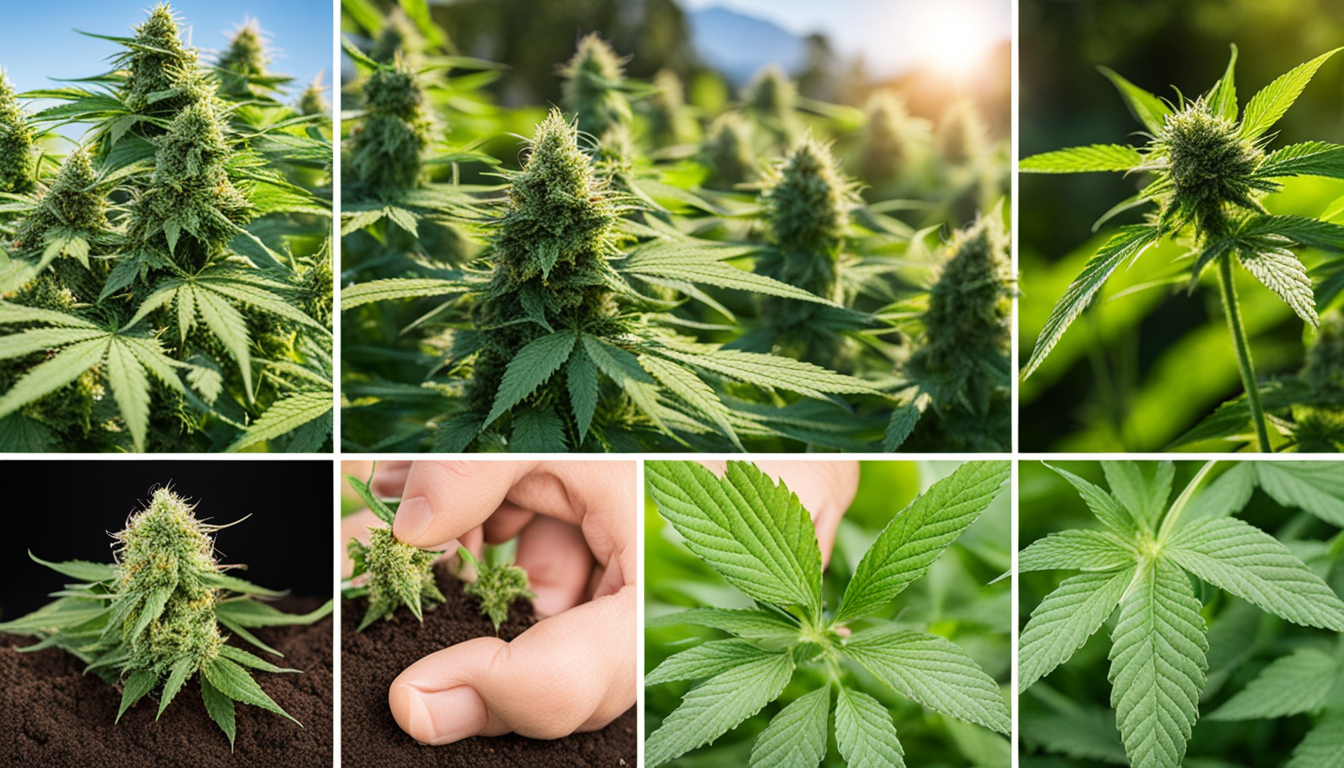
A series of images depicting common problems and their solutions in cannabis gardening.
The Ultimate Checklist for Starting Your Indoor Cannabis Garden:
| Checklist Item | Checklist Item | Checklist Item | Checklist Item |
|---|---|---|---|
| Research the Different Types of Cannabis | Choose the Right Growing Environment | Purchase the Necessary Equipment | Select the Right Cannabis Strain |
| Set Up the Growing Environment | Germinate the Cannabis Seeds | Transplant the Seedlings | Provide Adequate Light |
| Control the Temperature and Humidity | Check the Nutrient Levels | Watch Out for Pests and Diseases | Harvest and Dry the Cannabis |
| Maintain a Clean Growing Environment | Store Your Cannabis Properly | Understand the Legal Implications | Enjoy the Fruits of Your Labor |
Starting your own indoor cannabis garden is a rewarding endeavor that requires careful planning, preparation, and upkeep. With the essential checklist provided in this guide, you are now well-prepared to embark on your gardening journey. Remember, patience and consistency are key, and every setback is an opportunity for learning. Now, it’s time to roll up your sleeves, start planting, and watch your garden thrive.

